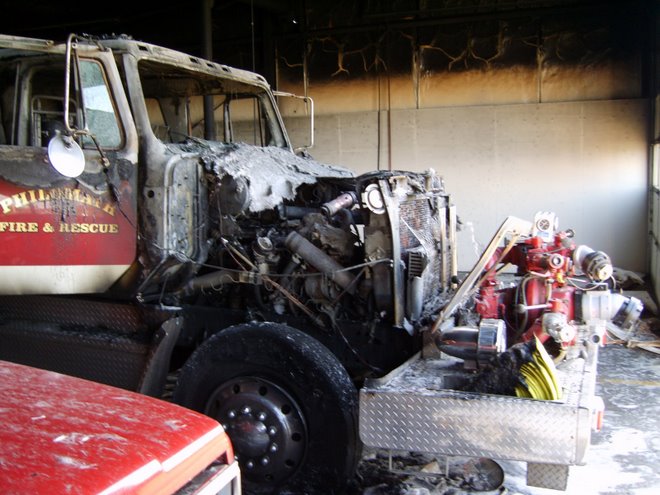Oh I am thinking this could get real ugly on big project fires when nothing else is slowing the fire down. I dont know which way I would go on this one.
From Western Montana Printed in The Missoulian
http://www.missoulian.com/articles/2008/02/27/news/top/news01.txt
Faced with possible jail time, U.S. Agriculture Undersecretary Mark Rey apologized Tuesday to a federal judge in Missoula for the Forest Service's delays in evaluating how wildfire retardant affects the environment.
But Rey, the Bush administration's top forest official, insisted the agency has complied with the National Environmental Policy Act and the Endangered Species Act.
Rey testified before U.S. District Judge Donald Molloy in a watchdog group's lawsuit accusing the Forest Service of violating the nation's top environmental laws through its use of fire retardant.
The hearing, which is scheduled to resume Wednesday, could result in Rey being jailed for contempt or placed on electronic monitoring.
The Forest Service also could be prohibited from dropping anything but water on wildfires until it complies with the judge's earlier orders.
As the West grapples with worsening wildfires and firefighting costs, the prospect of a federal forest official being jailed and retardant air tankers being grounded has drawn national attention. Government attorneys at Tuesday afternoon's hearing urged Molloy not to halt the use of fire retardant, saying a prohibition would threaten homes, communities and forests.
In a January ruling, Molloy said he considers the Forest Service to be in contempt for ignoring his orders, but that he would withhold a final decision until this week's hearing.
Forest Service officials said they did not intentionally ignore Molloy's order or delay completing their environmental analysis of the harm from ammonium phosphate, the primary ingredient in retardant dropped on wildfires.
They said they were slowed by several factors, including the unanticipated complexity of studying retardant's potential impact on more than 450 species from coast to coast.
They also blamed other agencies involved in the process - the U.S. Fish and Wildlife Service and the U.S. National Marine Fisheries Service - for slowing them down. The two wildlife agencies found that the Forest Service's lax attention to fire retardant drops could jeopardize dozens of endangered or threatened fish, plants and other aquatic species.
Those agencies said the impact could be reduced by taking certain steps in how the retardant is applied.
But Forest Service officials said retardant can be used without significant impact as long as they monitor species' mortality and health and take steps to keep chemical slurry away from waterways.
And they promised to consult with other agencies and study the impact of retardants and their toxicity.
Rey, a former timber industry lobbyist who has directed U.S. forest policy since 2001, was backed by a half-dozen government attorneys when he testified.
He repeatedly expressed regret for the Forest Service's delays, but said the agency acted in good faith.
“There's no way to put a positive face on the fact that we dropped the ball,” he told the judge. “I'm sorry, your honor.”
Molloy thanked Rey for his candor, but expressed continued impatience with the agency's failure to meet deadlines and keep him informed.
“Don't come in here on the last day - at the last minute - and tell me you've got a problem,” the judge said.
The hearing stems from a 2003 lawsuit brought by Forest Service Employees for Environmental Ethics after the Forest Service dropped fire retardant that killed 20,000 fish in Oregon in 2002.
In 2005, Molloy ruled that the Forest Service violated the law when it failed to properly analyze the potential environmental harm from ammonium phosphate. The judge gave the agency time to comply by working with the Fish and Wildlife Service and the National Marine Fisheries Service.
But in January, Molloy said the Forest Service had not followed through in a timely fashion.
The Forest Service uses an average of 15 million gallons of retardant on fires each year, although that figure has reached 40 million gallons during severe fire years in the past decade.
Andy Stahl, director of Forest Service Employees for Environmental Ethics, said the Forest Service should be required to conduct a more detailed environmental review that looks at the combined impact of aerial retardant, bulldozers and other firefighting activities.
FSEEE, based in Eugene, Ore., wants to use the suit to force the agency to change its firefighting policy to emphasize fire prevention around communities and allowing fires to burn if they pose minimal threat rather than extinguishing most fires.
Leave it to someone in the great Bastion of Communism "the Peoples Republik of Eugene OR
Wednesday, February 27, 2008
Subscribe to:
Post Comments (Atom)





1 comment:
Thanks for the comment!
We were shooting a .22 caliber rifle at 25 feet, and a .9mm Glock 17 at 25, 30, and 35 feet. Next time we'll see if I can take it back a little further :P
Post a Comment